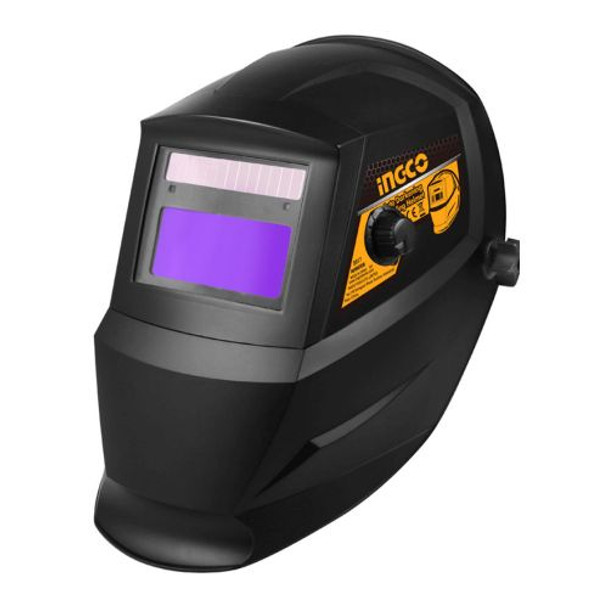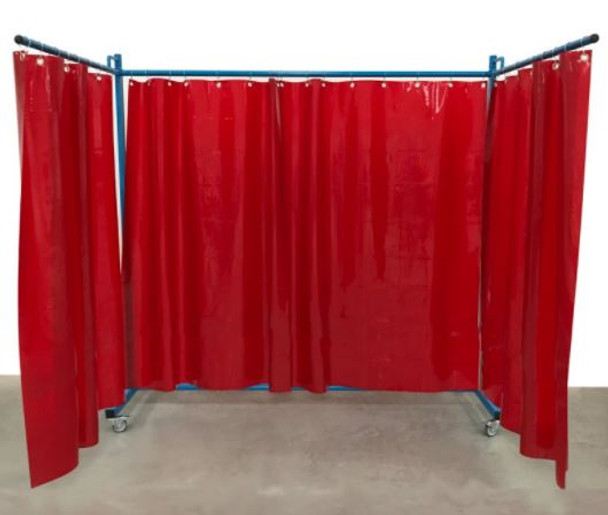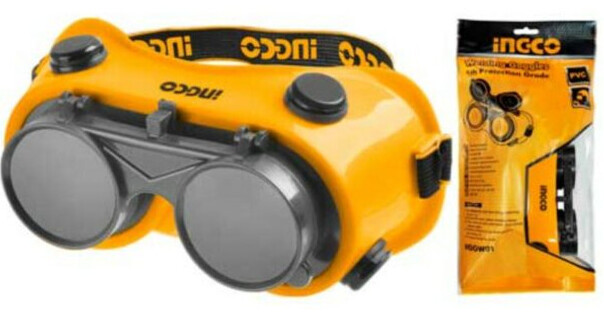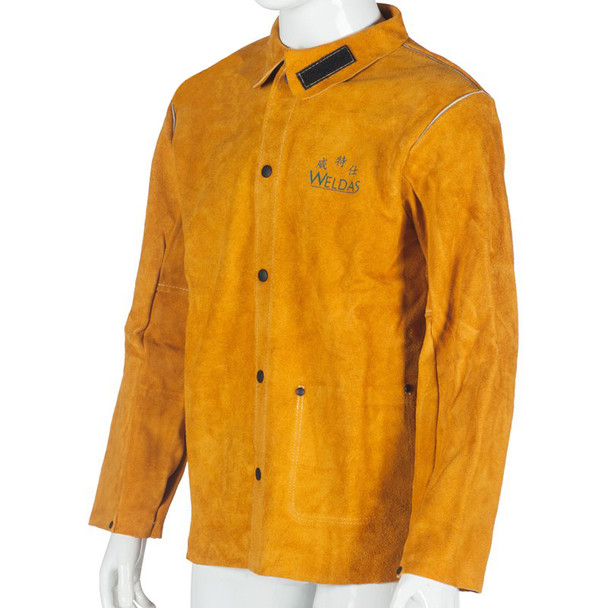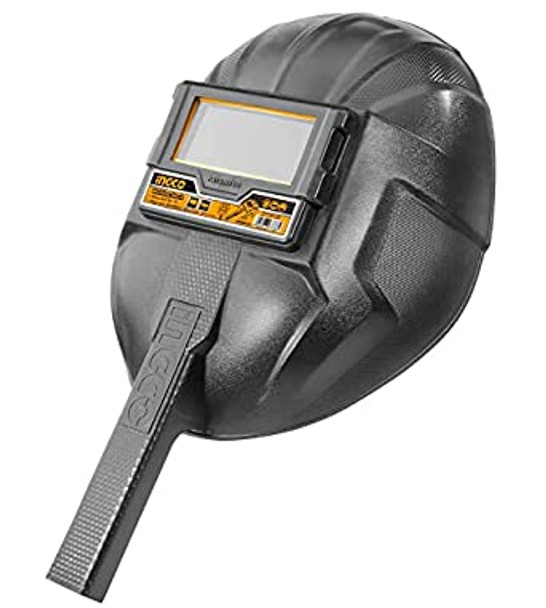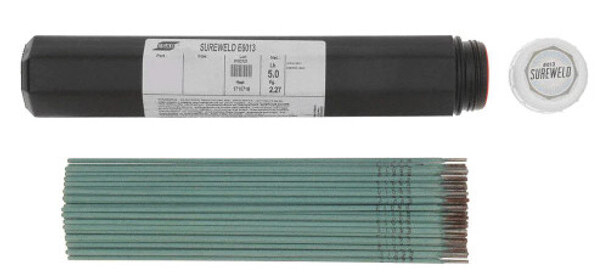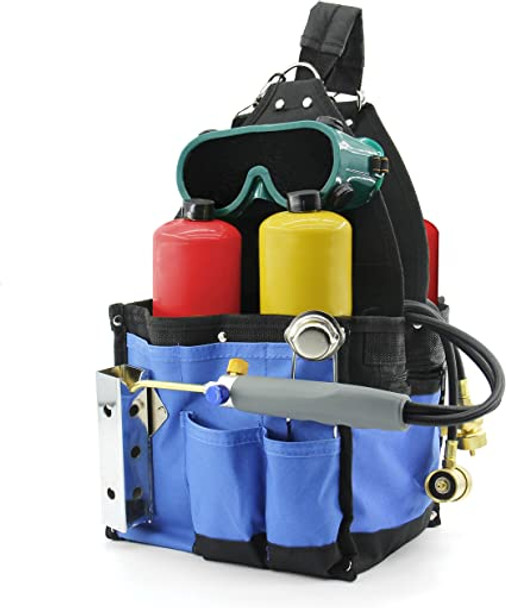Welding Equipment Safety: Best Practices for Welders
Safety is paramount in the world of welding. Welding equipment can be incredibly powerful and versatile, but it also comes with its own set of risks. That's why understanding and implementing best practices for welding equipment safety is not just a priority—it's a fundamental requirement for anyone working in the welding industry. Welding is a critical industrial process used across various sectors, from construction and manufacturing to automotive and aerospace industries. It involves the application of intense heat and potentially hazardous materials, making it imperative to prioritize safety. Welding equipment safety is not just a best practice; it is an absolute necessity.
Buy Online... Auto Darkening Welding Helmet INGCO AHM008
let's touch upon a few fundamental safety tips that every welder should engrave into their work habits. Always wear appropriate personal protective equipment (PPE), including welding helmets, gloves, and flame-resistant clothing. Ensure your work area is well-ventilated and free of flammable materials to minimize the risk of fires or explosions. Regularly inspect your welding equipment and replace or repair any damaged components. Adhere to recommended welding techniques, paying careful attention to safe positions and fume control. Lastly, be prepared with an emergency plan and know how to respond in case of accidents or injuries. These tips are the foundation of a safe welding environment, and we will explore each of them in greater detail as we progress through this guide."
Without proper safety measures, welding can lead to a range of serious accidents and health risks. These can include burns, eye injuries, respiratory problems due to fume inhalation, electric shock, and even long-term health issues like lung cancer from exposure to welding fumes. In extreme cases, inadequate safety measures can result in fires, explosions, or structural failures, endangering not only the welder but also those in the vicinity.
Therefore, understanding and implementing effective safety practices is crucial for all individuals involved in welding operations. This encompasses not only the welders themselves but also supervisors, safety officers, and anyone else working in proximity to welding activities.
In this comprehensive guide, we will delve into the crucial aspects of welding equipment safety, providing welders of all levels with essential knowledge and practical tips. Whether you're a seasoned professional or just starting your journey in the world of welding, this resource will help you create a safer working environment and reduce the potential hazards associated with this powerful technology. So, let's embark on this journey to enhance your safety knowledge and ensure your welding projects are not only successful but also incident-free.
Buy Online... WELDING CURTAINS
Understanding the Hazards for Welding equipment
Welding is a crucial skill in various industries, from construction to manufacturing. However, it comes with its own set of hazards that welders need to be acutely aware of. In this section, we will delve into the common hazards associated with welding equipment, potential health risks, and the ever-present danger of fire and explosions.
Common Hazards in Welding
Welding involves the intense use of heat and open flames. This exposes welders to a range of risks. The most common hazards include:
- Fumes and Gases: The welding process releases a cocktail of fumes and gases, including toxic heavy metals like cadmium and lead. Inhaling these can lead to various respiratory illnesses.
- Electrical Hazards: Electric shock from welding equipment can cause severe injury or even be fatal. It's vital to ensure equipment is well-maintained and correctly grounded.
- Noise: The equipment used in welding can be noisy. Prolonged exposure to high levels of noise can cause hearing damage.
- Physical Hazards: Molten metal, sparks, and hot slag can cause burns and ignite clothing. The hot work environment also increases the risk of heat-related illnesses.
Potential Health Risks
Welding fumes contain a wide range of hazardous substances, depending on the materials being welded. Some common health risks associated with welding include:
- Respiratory Problems: Inhaling welding fumes can lead to a range of respiratory issues, including bronchitis, asthma, and pneumoconiosis (a group of lung diseases).
- Heavy Metal Poisoning: Some welding fumes contain toxic heavy metals, which can accumulate in the body and lead to various health problems.
- Neurological Issues: Exposure to manganese in welding fumes has been linked to neurological disorders, which can affect a welder's coordination and motor skills.
Fire and Explosion Risks
Welding inherently involves dealing with high heat and flammable materials. This combination creates a significant fire and explosion risk. Welders must be vigilant to avoid accidents due to:
- Sparks and Splatter: The welding process produces sparks and molten metal that can ignite flammable materials in the vicinity.
- Explosive Atmospheres: In certain work environments, welding in the presence of explosive gases or dust can lead to catastrophic explosions.
Buy Online... INGCO Welding Goggles HSGW01, Safety Welding Goggles
Personal Protective Equipment (PPE)
Personal Protective Equipment (PPE) is a vital component of welding safety. PPE protects welders from hazards such as heat, sparks, fumes, electric shock, and radiation. PPE also helps prevent injuries and illnesses that can affect the welder’s health and productivity.
The role of PPE in welding safety is to provide a barrier between the welder and the potential sources of harm. PPE can reduce the risk of burns, eye damage, respiratory problems, and other adverse effects of welding. However, PPE is not a substitute for proper work practices and engineering controls. Recommended PPE for different welding processes may vary depending on the type, intensity, and duration of the welding operation. However, some common PPE items that welders should wear are:
Welding helmet:
A welding helmet protects the welder’s face, eyes, and head from the intense light, heat, and radiation emitted by the welding arc. A welding helmet should have a filter lens that meets the appropriate shade number for the welding process and current. A welding helmet should also have a headband that fits snugly and comfortably, and a flip-up front that allows the welder to see clearly when not welding.
Welding gloves:
Welding gloves protect the welder’s hands and wrists from heat, sparks, and electric shock. Welding gloves should be made of leather or other durable material that can withstand high temperatures and abrasion. Welding gloves should also fit well and allow the welder to manipulate the welding equipment with ease.
Welding jacket:
A welding jacket protects the welder’s torso and arms from heat, sparks, and spatter. A welding jacket should be made of flame-resistant fabric that does not melt or burn when exposed to welding hazards. A welding jacket should also have a high collar, long sleeves, and snap buttons or zippers that prevent the entry of sparks and spatter.
Welding pants:
Welding pants protect the welder’s legs from heat, sparks, and spatter. Welding pants should be made of flame-resistant fabric that does not melt or burn when exposed to welding hazards. Welding pants should also have no cuffs, pockets, or other features that can catch sparks and spatter.
Welding boots:
Welding boots protect the welder’s feet and ankles from heat, sparks, and electric shock. Welding boots should be made of leather or other durable material that can withstand high temperatures and abrasion. Welding boots should also have steel toes, rubber soles, and high tops that cover the ankles.
Proper usage and maintenance of PPE is essential for ensuring its effectiveness and longevity. Some general guidelines for using and maintaining PPE are:
- Inspect PPE before each use and discard or replace any damaged or defective items.
- Clean PPE regularly and store it in a dry and ventilated place away from direct sunlight and heat sources.
- Follow the manufacturer’s instructions for washing, drying, and repairing PPE.
- Do not modify or alter PPE in any way that may compromise its safety or performance.
- Do not share PPE with other workers unless it is properly sanitized and fitted.
- Do not wear PPE that is too loose, too tight, or uncomfortable, as it may interfere with your vision, movement, or breathing.
How to Safeguard your Welding Environment
Ensuring a safe welding environment is paramount to protecting both welders and the surrounding area. In this section, we will delve into the key aspects of safeguarding the welding environment, covering ventilation and fume extraction, fire prevention and control, and maintaining a clear work area.
Ventilation and Fume Extraction
Proper ventilation and fume extraction are integral to welding safety. These measures help remove harmful welding fumes and maintain air quality. Here's how to achieve effective ventilation:
- Natural Ventilation: Ensure that your workspace has ample natural airflow. Open doors and windows to create cross-ventilation, which can help disperse welding fumes.
- Mechanical Ventilation: In situations where natural ventilation is insufficient, use mechanical ventilation systems. Local exhaust ventilation, which captures fumes directly at the source using hoods or exhaust arms, is particularly effective.
- Fume Extractors: Portable fume extractors, equipped with filters, can be positioned near the welding operation to draw in and filter out harmful fumes before releasing clean air back into the workspace.
- Respiratory Protection: Welders should wear appropriate respiratory protection as an additional measure. Respirators with filters designed to capture welding fumes are essential when working in confined spaces or when other ventilation methods are inadequate.
Buy Online... Welders welding Jacket Leather
Fire Prevention and Control
Welding involves heat, sparks, and open flames, making fire prevention and control critical. Follow these practices:
- Ensure the welding area is free from flammable materials. Maintain a clean and clutter-free workspace.
- Have suitable fire extinguishers nearby, and ensure that welders are trained in their use.
- Use spark shields or welding curtains to contain sparks and prevent them from spreading.
Clearing the Work Area
Welding involves the use of various tools, equipment, and materials that can create clutter and obstruction in the welding area. Welders should clear their work area before, during, and after welding to prevent accidents, injuries, and damages. Clearing the work area involves these actions :
- Clearly mark the welding zone with designated boundaries, so others are aware of the area to avoid.
- Ensure that welding cables and hoses are properly secured and do not present tripping hazards.
- Arrange your workspace for ergonomic and safe access to the welding project.
- Store welding equipment, tools, and materials neatly and securely. This allows for a more efficient workflow.
Safeguarding the welding environment through effective ventilation, fire prevention and control measures, and maintaining a clear work area is essential for welder safety and the protection of the surrounding workspace. By incorporating these practices into your welding procedures, you can ensure a safer and more productive welding environment.
Buy Online... Ingco Welding mask - Hhwm102
Welding Equipment Inspection and Maintenance
Welding Equipment Inspection and Maintenance is an essential topic for welders who want to ensure the optimal performance and safety of their welding equipment. Welding equipment consists of various components that can wear out, malfunction, or break down over time due to use, abuse, or neglect. Therefore, welders should inspect and maintain their welding equipment regularly to prevent accidents, injuries, and damages. Welding equipment inspection and maintenance involves these aspects:
Pre-welding equipment checks:
Pre-welding equipment checks are the inspections that welders should perform before starting any welding operation. Pre-welding equipment checks help welders to verify that their welding equipment is in good working condition and ready to use. Pre-welding equipment checks include these steps:
- Verify that the power source is functioning correctly. Check for any exposed or frayed wires, and ensure all connections are secure.
- Inspect welding cables and hoses for wear, damage, or exposed wires. Damaged cables and hoses can pose electrical and fire hazards.
- Check the welding torch for any signs of damage, such as cracks, bends, or clogs, and ensure that it is clean and free of any foreign materials
- Ensure that electrode holders and ground clamps are in good condition. Faulty holders or clamps can result in poor weld quality.
- For gas welding or shielding, confirm that gas cylinders and hoses are intact and leak-free.
- Verify that the auto-darkening welding helmet is operational. Test the auto-darkening feature and make sure the helmet's lenses are clean and undamaged.
- Ensure you are wearing the appropriate personal protective equipment (PPE), including gloves, safety glasses, and welding apparel.
- Check the condition of welding electrodes, wire, or filler material. Ensure they are free from contamination and stored properly.
Regular maintenance routines:
Regular maintenance routines are the procedures that welders should follow periodically to keep their welding equipment in optimal condition and extend its service life. Regular maintenance routines help welders to prevent or reduce the occurrence of equipment issues and improve the quality and efficiency of their welding operations. Regular maintenance routines include these actions:
- Clean the welding equipment after each use and remove any dust, dirt, grease, or slag that may affect its performance or safety.
- If your welding equipment has a cooling system, regularly inspect it to ensure it's functioning correctly. Clean or replace filters as needed.
- Lubricate the moving parts of the welding equipment, such as the fans, motors, or gears, according to the manufacturer’s instructions and specifications.
- Replace the consumable parts of the welding equipment, such as the electrodes, filler metal, flux, or shielding gas, when they are worn out, depleted, or expired.
- Calibrate the welding equipment, such as the power source, cables, or torch, according to the manufacturer’s instructions and specifications, and adjust the settings, such as the voltage, current, or speed, according to the welding process and material requirements.
- Test the welding equipment, such as the power source, cables, or torch, for any defects, malfunctions, or errors, and troubleshoot them accordingly.
Identifying and Addressing Equipment Issues
It's crucial to promptly identify and address any equipment issues to avoid or minimize the negative impacts of equipment failures, such as poor weld quality, wasted time and resources, or potential hazards. Some common equipment issues to watch out for include:
- Electrical Problems: If you notice inconsistent arcs, spatter, or irregular welding patterns, it may indicate electrical issues. Consult a technician to inspect and repair electrical components.
- Gas Leaks: Gas leaks are hazardous and can lead to explosions. If you detect a gas leak, shut off the gas supply immediately and seek professional help.
- Coolant Leaks: A leaking coolant system can cause overheating. Check for coolant leaks and address them promptly to avoid equipment damage.
- Noisy Fans or Motors: Unusual noises from fans or motors may signify problems. Investigate the source of the noise and make repairs or replacements if necessary.
- Overheating: If equipment is overheating, it can affect welding quality. Ensure proper ventilation and cooling mechanisms are functioning.
Buy Online... Esab Stick Welding Electrode 3/32 x 14in 5kg E6013 Sureweld series
Welding Techniques Tips for Optimal Safety
Welding Techniques Tips for Optimal Safety is a useful topic for welders who want to improve their welding skills and prevent accidents and injuries. Welding techniques are the methods and practices that welders use to perform different welding processes and produce quality welds. Welding techniques can affect the safety of the welder and the work environment, as well as the efficiency and effectiveness of the welding operation. Therefore, welders should follow these tips for optimal safety when applying welding techniques:
Safe Welding Positions
Welding positions are the orientations of the weld joint and the welding torch relative to the horizontal and vertical planes. Welding positions can be classified into four basic types: flat, horizontal, vertical, and overhead. Welding positions can affect the difficulty and risk of the welding operation, as well as the quality and appearance of the weld. Therefore, welders should choose the safest and most suitable welding position for each welding process and material. Some tips for safe welding positions are
Flat Position
Use the flat position whenever possible, as it is the easiest and safest position to weld. The flat position allows the welder to have better control and visibility of the weld pool and the arc, and reduces the risk of spatter, slag, or fumes falling on the welder or the workpiece.
Overhead Position
Avoid the overhead position unless necessary, as it is the most difficult and dangerous position to weld. The overhead position requires the welder to hold the torch above the head and weld against gravity, which can cause fatigue, strain, and discomfort. The overhead position also increases the risk of spatter, slag, or fumes falling on the welder or the workpiece, and may result in poor weld penetration, distortion, or porosity.
Electrode Angle
Use the appropriate electrode angle and travel speed for each welding position, as they can affect the stability and shape of the weld pool and the arc. Generally, the electrode angle should be between 5 and 15 degrees from the perpendicular to the weld joint, and the travel speed should be consistent and moderate. However, the electrode angle and travel speed may vary depending on the welding process, current, and material.
Practice and master the different welding positions before attempting them on actual workpieces, as they require different skills and techniques. Welders can use welding simulators, mock-ups, or scrap materials to practice and improve their welding positions
Welding Parameters And Settings
Welding parameters and settings are the variables that control the welding operation, such as the voltage, current, polarity, and gas flow. Welding parameters and settings can affect the quality and safety of the weld, as well as the efficiency and effectiveness of the welding operation. Therefore, welders should adjust and optimize the welding parameters and settings for each welding process and material. Some tips for welding parameters and settings are:
- Follow the manufacturer’s recommendations and specifications for the welding equipment
- Use a welding chart or calculator to determine the appropriate welding parameters and settings
- Test the welding parameters and settings on a sample or scrap material before welding on the actual workpiece
- Monitor and adjust the welding parameters and settings during the welding operation
Managing Welding Fumes And Gases
Welding fumes and gases are the airborne particles and vapors that are generated by the welding operation, such as the metal oxides, carbon monoxide, and ozone. Welding fumes and gases can be harmful to the welder’s health and the environment, as they can cause respiratory, skin, eye, or nervous system problems, or even cancer. Therefore, welders should manage and minimize the exposure and emission of welding fumes and gases. Some tips for managing welding fumes and gases are:
- Use adequate ventilation and fume extraction in the welding area
- Wear appropriate respiratory protection when working in confined or poorly ventilated spaces, or when welding toxic or hazardous materials
- Avoid breathing or standing directly over the welding fumes and gases
- Follow the safety data sheets (SDS) and labels for the welding materials
Buy Online... Hellog Welding Oxygen MAPP gas Cylinder Torch Kit.
Frequently Asked Questions
Q1 What are the protection and safety of welding?
To protect your neck, put on long sleeve shirts with collars and buttoned cuffs. Light reflection is impeded by dark hues. Closure of shirt pockets should be taped to prevent sparks or hot metal from getting inside, or covered with flaps. Cuffs on the pants legs must not show, and they must cover the tops of the boots.
Q2 What is the main tool for welding?
The welding machine, which is the main instrument a welder uses to fuse materials, is the most crucial tool in their toolkit. These devices, also referred to as welding guns and welders, supply the energy and components needed to produce the heat necessary to melt materials.
Q3 Which gas is used in welding?
Acetylene and oxygen is the right response. Acetylene and oxygen are the gasses used in welding. One of the most used types of welding is oxy-acetylene welding. The flame created by the mixture of gasses melts the metal faces of the workpieces to be joined, causing them to flow together in oxy-acetylene welding.
Related Article;
12 essential welding equipment for fabrication work
Essential Welding Equipment for Beginners: A Comprehensive Guide
What is the cost of a Portable welding machine in Nigeria in 2023?
Conclusion
Welding is a rewarding and challenging profession that requires skill, knowledge, and dedication. However, welding also involves various hazards and risks that can endanger the welder and the work environment. Therefore, welding safety is a paramount and essential aspect of welding that welders should always adhere to and practice.
In this article, we have discussed some of the key topics and tips for welding safety, such as personal protective equipment, welding environment, welding equipment, welding techniques, electrode and filler material, and emergency response. These topics and tips can help welders to prevent or reduce the occurrence and impact of accidents, injuries, and damages, as well as to ensure the quality and efficiency of their welding operations.
However, welding safety is not a one-time or static matter, but a continuous and dynamic process that requires constant attention and improvement. Welders should always update and enhance their welding safety knowledge and skills, and follow the latest standards and regulations for welding safety. Welders should also always inspect and maintain their welding equipment and materials, and report and address any issues or problems promptly and properly.
Welding safety is not only a requirement, but also a benefit and a value for welders and their profession. Welding safety can help welders to protect their health and well-being, improve their performance and productivity, and enhance their reputation and recognition. Welding safety can also help welders to enjoy and appreciate their work, and to achieve their goals and aspirations.
We hope that this article has provided you with some useful and practical information and guidance on welding safety, and that you will apply and implement them in your welding activities. Remember, welding safety is the key to welding success. For more information and HELP concerning welding safety, Contact Gz Industrial Supplies Today


